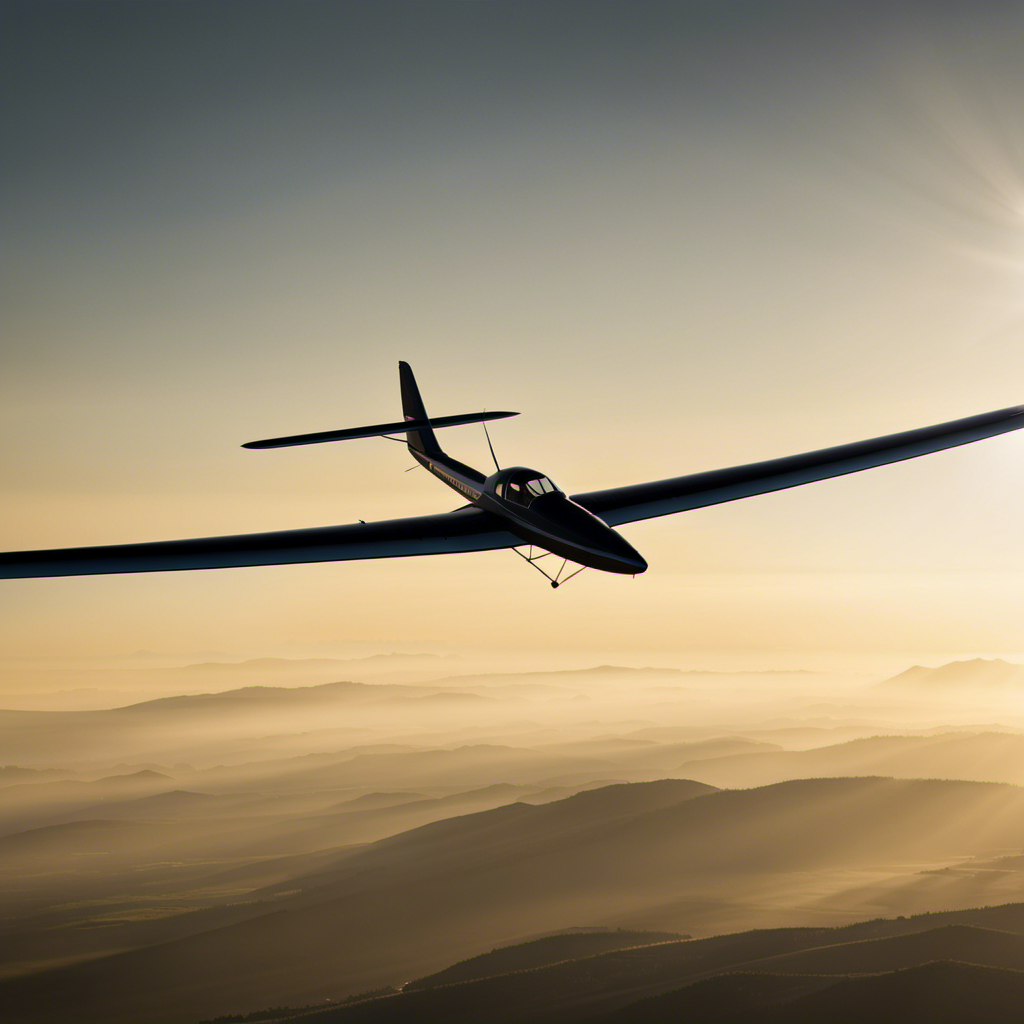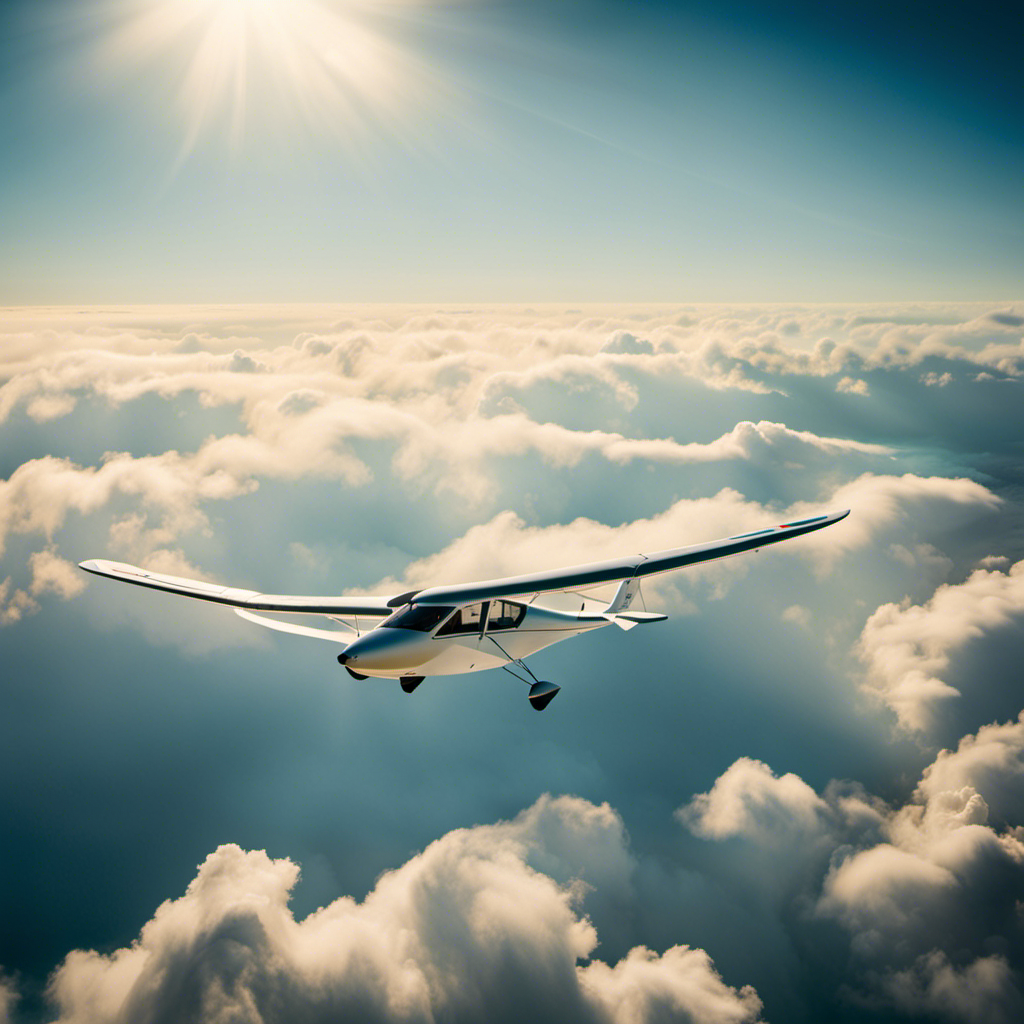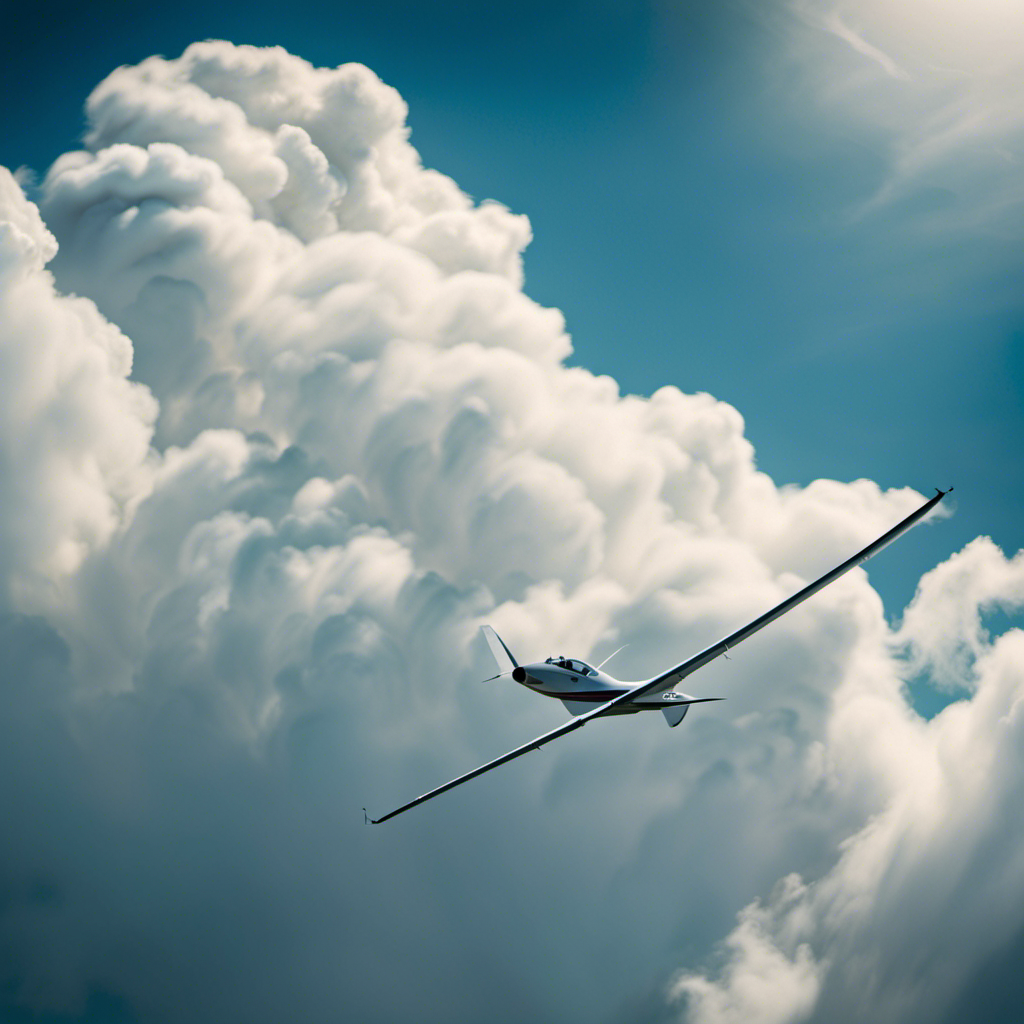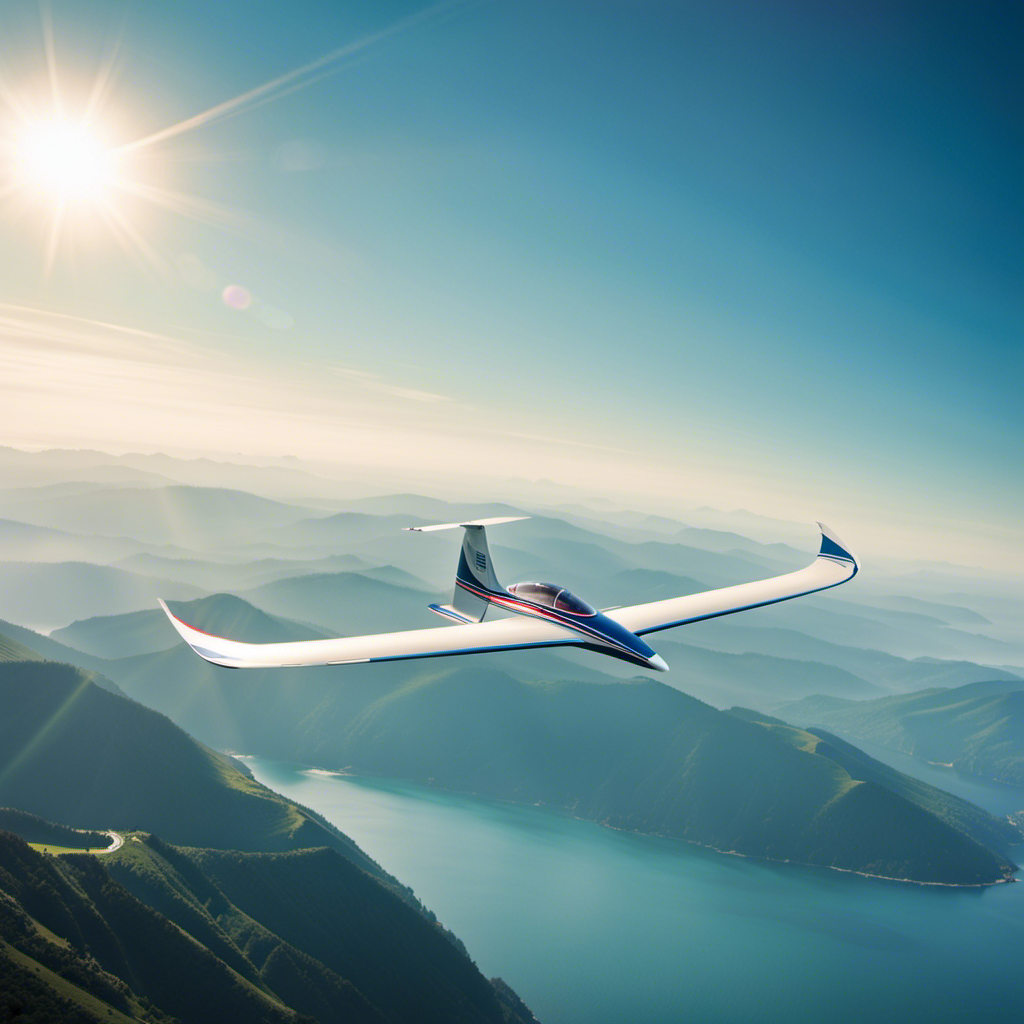Are you curious about the average load factor for a sailplane during a turn? Understanding this crucial concept in flight is essential for pilots looking to improve their flying abilities.
In this article, we will delve into the physics behind load factor, explore its importance in turns, and discuss how to calculate it.
We will also examine the effects of load factor on sailplane performance, factors that influence it during turns, and the role of pilot skill in managing it.
So, let’s dive in and unravel the mysteries of load factor for smooth and efficient turns in sailplane flight.
Key Takeaways
- The average load factor in sailplanes during turns ranges from 1.2 to 2.5.
- Load factor management is crucial for ensuring structural integrity and safety during turns.
- Skilled pilots have the ability to control bank angle, airspeed, weight, and rate of turn to minimize stress on the wings and maintain a comfortable load factor.
- Understanding and managing load factor is essential for achieving smooth and efficient turns in sailplane flight.
Understanding Load Factor in Sailplane Flight
To understand load factor in sailplane flight, you’ll need to grasp the concept of how the average load factor is calculated during a turn.
Load factor is the ratio of the total aerodynamic force on the sailplane to its weight. During a turn, the load factor increases due to the centrifugal force acting on the aircraft. This force is perpendicular to the wings and directed outward from the center of the turn.
The average load factor is calculated by dividing the total lift force by the weight of the sailplane. It is an important parameter to consider as it affects the structural integrity of the aircraft and determines the maximum load it can sustain.
Understanding the load factor during turns is crucial for pilots to ensure safe and efficient flight operations. By managing the load factor, pilots can maintain control and stability throughout the turn, preventing excessive stress on the aircraft.
The Importance of Load Factor in Turns
Load factor is crucial for maintaining stability and control in a sailplane when making turns. During a turn, the sailplane experiences an increase in load factor due to the centrifugal force acting on it.
Load factor is defined as the ratio of the total aerodynamic force acting on the sailplane to its weight. In a level turn, the load factor is equal to 1, meaning that the total aerodynamic force is equal to the weight of the sailplane.
However, as the turn becomes steeper, the load factor increases. This increase in load factor puts additional stress on the sailplane’s structure and requires the pilot to make adjustments to maintain control.
Exploring the physics behind load factor will provide further insight into how it affects the flight characteristics of a sailplane.
Exploring the Physics Behind Load Factor
In this discussion, you’ll explore the physics behind load factor. You’ll focus on two key forces: centripetal and gravitational forces, as well as lift and drag forces.
Centripetal force is responsible for keeping an object moving in a curved path. It ensures that the object stays on its intended trajectory and doesn’t veer off. This force is crucial in maintaining stability during turns.
Gravitational force, on the other hand, pulls the object towards the center of the Earth. It acts vertically downwards and is constant regardless of the object’s motion. This force plays a significant role in determining the weight of the object and affects its overall performance during maneuvers.
In addition to centripetal and gravitational forces, lift and drag forces are essential in understanding load factor. Lift force is generated by the wings of an aircraft and opposes the force of gravity. It allows the aircraft to stay airborne and provides the necessary upward force to counteract gravity.
Drag force, on the other hand, is the resistance encountered by the aircraft as it moves through the air. It acts in the opposite direction of the aircraft’s motion and affects its speed and efficiency.
Centripetal and Gravitational Forces
The sailplane’s average load factor is affected by both centripetal and gravitational forces. During a turn, the centripetal force acts towards the center of the turn, keeping the sailplane on its curved path. This force is generated by the wing’s lift, which is directed perpendicular to the flight path.
As the sailplane turns, the lift force is divided into two components: one that opposes gravity and the other that provides the necessary centripetal force. The gravitational force, on the other hand, acts vertically downwards and is always present, affecting the overall load factor.
The combination of these forces determines the load factor experienced by the sailplane.
Now, let’s delve into the next section to understand how lift and drag forces contribute to the overall performance of the sailplane.
Lift and Drag Forces
Now, let’s explore how lift and drag forces affect your sailplane’s performance. Lift is the force that opposes gravity and allows your sailplane to stay in the air. It is generated by the shape of the wings and is perpendicular to the oncoming airflow. Drag, on the other hand, is the force that resists the forward motion of your sailplane. It is caused by the friction between the air and the surfaces of your sailplane. To understand the impact of lift and drag on your sailplane, let’s take a look at the following table:
| Lift Force | Drag Force |
|---|---|
| Increases with angle of attack | Increases with airspeed |
| Decreases with decrease in airspeed | Decreases with decrease in angle of attack |
| Maximum at a specific angle of attack | Minimum at a specific airspeed |
| Increases with increase in wing area | Increases with increase in wing area |
| Decreases with increase in air density | Decreases with increase in air density |
As you can see, lift and drag forces are crucial in determining the performance of your sailplane. Understanding how these forces change with different variables can help you optimize your flight. Now, let’s move on to calculating the load factor in a turn, which is another important aspect of sailplane aerodynamics.
Calculating Load Factor in a Turn
Calculating the load factor in a turn can be achieved by dividing the total lift force by the aircraft’s weight. This load factor, often denoted as ‘n’, represents the ratio of the lift force experienced by the aircraft to its weight.
In a coordinated turn, the load factor is equal to the cosine of the bank angle. For example, if the bank angle is 45 degrees, the load factor would be approximately 0.707. By increasing the bank angle, the load factor can be increased, resulting in a higher level of g-forces experienced by the pilot and the aircraft.
These g-forces can have significant effects on sailplane performance, including increased stall speed, reduced maneuverability, and increased drag. Understanding the effects of load factor on sailplane performance is crucial for pilots to ensure safe and efficient flight operations.
Effects of Load Factor on Sailplane Performance
Increasing the bank angle in a turn can result in higher g-forces experienced by you as the pilot and the aircraft, which can have significant effects on sailplane performance. Higher load factors increase the stress and strain on the aircraft structure, potentially leading to structural damage or failure if exceeded. Additionally, higher load factors increase drag, reducing the sailplane’s performance and ability to maintain altitude. To better understand the effects of load factor on sailplane performance, consider the following table:
| Load Factor | Effects on Sailplane Performance |
|---|---|
| 1 | No additional effects |
| 2 | Increased stall speed |
| 3 | Reduced maneuverability |
| 4 | Decreased climb rate |
Techniques for Managing Load Factor in Turns
To effectively manage the stress and strain on your aircraft during turns, it’s important to employ proper techniques that optimize performance and minimize the risk of structural damage.
One technique is to smoothly initiate a turn by applying coordinated aileron and rudder inputs. This helps maintain a balanced load distribution across the wings and reduces the risk of exceeding the aircraft’s maximum load factor.
Additionally, maintaining a constant bank angle throughout the turn helps ensure a consistent load factor and prevents sudden changes in lift and drag.
It’s also crucial to monitor your speed during turns, as excessive speed can increase the load factor and put additional strain on the aircraft.
By employing these techniques, you can effectively manage the load factor and ensure safe and efficient turns.
Understanding the factors affecting load factor in turns is key to optimizing your aircraft’s performance and minimizing the risk of structural damage.
Factors Affecting Load Factor in Turns
When you’re flying your aircraft and making turns, it’s important to be aware of the different factors that can affect how much stress is placed on the wings. One of the main factors that contributes to the load factor during a turn is the bank angle. The steeper the bank angle, the higher the load factor will be.
Additionally, the airspeed plays a crucial role in determining the load factor. Higher airspeeds result in higher load factors. Another factor to consider is the weight of the aircraft. The heavier the aircraft, the higher the load factor will be. Lastly, the rate of turn also affects the load factor. A faster rate of turn will result in a higher load factor.
Understanding these factors and their impact on the load factor is essential for pilots to effectively manage their aircraft during turns.
By understanding the factors that affect the load factor, pilots can adjust their techniques and make informed decisions to maintain a safe and efficient flight. Additionally, pilot skill plays a significant role in managing the load factor during turns. A skilled pilot can precisely control the bank angle, airspeed, weight, and rate of turn to minimize the stress on the wings and maintain a comfortable load factor.
It requires a combination of knowledge, experience, and precise control inputs to effectively manage the load factor during turns. Therefore, developing and honing pilot skills is crucial for maintaining safe and smooth flight operations.
Load Factor and Pilot Skill
Pilot skill plays a crucial role in effectively managing the load factor in turns. As a pilot, you need to understand how your actions and inputs affect the load factor experienced by the sailplane. By skillfully controlling the aircraft’s bank angle, airspeed, and coordination, you can optimize the load factor and ensure a safe and efficient turn.
To better understand the relationship between pilot skill and load factor management, let’s take a look at the following table:
| Skill | Bank Angle | Airspeed |
|---|---|---|
| Excellent | Controlled | Adequate |
| Good | Moderate | Slightly low |
| Average | Excessive | Too high |
By maintaining a controlled bank angle and an adequate airspeed, you can achieve an excellent skill level, resulting in a well-managed load factor during turns.
Transitioning to the next section about load factor and safety in sailplane flight, it is essential to prioritize skill development to ensure a safe and controlled flying experience.
Load Factor and Safety in Sailplane Flight
Maintaining a controlled bank angle and adequate airspeed is crucial for ensuring safe and efficient turns in sailplane flight. To understand the importance of load factor and safety in sailplane flight, consider the following:
-
Imagine yourself smoothly banking into a turn, feeling the gentle pull of gravity as the sailplane gracefully curves through the sky.
-
Visualize the wings of the sailplane flexing slightly under the increased load, distributing the forces evenly across its structure.
-
Envision the pilot, relaxed and focused, adjusting the control inputs to maintain the desired bank angle and airspeed, ensuring a harmonious flow of forces.
By understanding and managing load factor, you can enhance the safety and efficiency of your turns in sailplane flight.
Transitioning into the subsequent section, mastering load factor is essential for achieving smooth and efficient turns in sailplane flight.
Conclusion: Mastering Load Factor for Smooth and Efficient Turns in Sailplane Flight
Understanding and managing load factor is essential for achieving smooth and efficient turns in sailplane flight. This allows for a harmonious flow of forces. Load factor refers to the ratio of the lift force acting on the aircraft to its weight. During a turn, the load factor increases due to the increased lift required to sustain the turn.
The average load factor experienced by a sailplane during a turn depends on various factors such as bank angle, airspeed, and radius of the turn. Typically, sailplanes experience load factors ranging from 1.2 to 2.5 during turns.
It is crucial to manage the load factor within the limits specified by the sailplane’s manufacturer to ensure structural integrity and safety. By understanding and mastering load factor, you can achieve precise and efficient turns, making your sailplane flight a truly exhilarating experience.
Frequently Asked Questions
What is the typical load factor experienced by a sailplane during a turn?
The typical load factor experienced by a sailplane during a turn is around 1.5 to 2.5 times the aircraft’s weight. This is due to the increased lift required to counteract the centrifugal force generated during the turn.
How does load factor affect the performance of a sailplane during a turn?
Load factor affects the performance of a sailplane during a turn by increasing the overall load on the wings. This increased load can lead to higher stall speeds, reduced maneuverability, and increased stress on the aircraft.
Are there any specific techniques or maneuvers that can be used to manage load factor during turns?
To manage load factor during turns in a sailplane, you can employ techniques such as coordinated bank angle and control input adjustments. These maneuvers help distribute the load evenly, maintain stability, and optimize performance throughout the turn.
What are some factors that can affect the load factor experienced by a sailplane during a turn?
Factors that can affect the load factor experienced by a sailplane during a turn include bank angle, airspeed, and wing design. Higher bank angles and slower airspeeds result in increased load factors, while wing design can influence the distribution of load across the wings.
How does pilot skill influence the load factor and safety of sailplane flight during turns?
Your skill as a pilot directly impacts the load factor and safety of sailplane flight during turns. Your ability to smoothly coordinate controls, maintain proper airspeed, and anticipate changes in load factor is crucial for a safe and efficient turn.
Conclusion
Congratulations! You’ve now mastered the intricacies of load factor in sailplane flight. Like a skilled conductor guiding an orchestra, you’ve learned how to harmonize the forces at play during turns, resulting in smooth and efficient maneuvers.
By understanding the physics behind load factor and its effects on sailplane performance, you’ve unlocked the key to soaring through the skies with precision and finesse.
So spread your wings, embrace the power of load factor, and let your sailplane dance through the air like a graceful swan.









